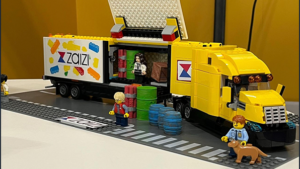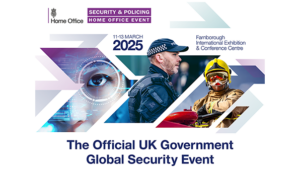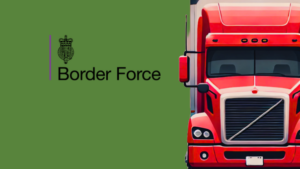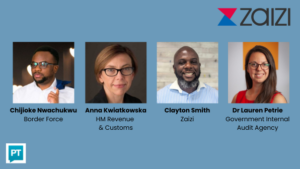
How Zaizi’s user-centred approach won the trust of border officers
Content designer Louis Pattison and user researcher Bradley Reeder looked closely at how border officers work. Their goal? To create a product that really helps border officers do their jobs better.
It’s always satisfying to see a project you’ve worked on from the discovery phase finally get out there into the real world for the first time. But it’s particularly satisfying when you get glowing feedback – both from stakeholders, and from the people who will use the service every day.
For over two years, we’ve been working closely with our Border Force partners on a new application to improve cargo scanning processes at the UK border. In October 2024, following an internal service assessment, the project entered private beta, meaning that it’s being used by frontline officers at ports for the first time.
The feedback for the new service has so far been resoundingly positive. “The ability to view images remotely via second opinion is a real positive benefit of ScanApp,” said one border officer.
Another noted: “It provides detection staff with excellent tools to assist in our roles – functions such as [being able to offer a] second opinion are also extremely helpful and will be utilised thoroughly.”
Case study: Creating safe, secure and frictionless digital borders — Border Force
Designing with the border officers in mind
At Zaizi, we believe that user research isn’t just a nice-to-have – it’s a fundamental part of building a service that meets both the needs of its users and wider organisational objectives.
During this project, we’ve been able to meet with frontline officers, learn about their role and day-to-day struggles, and observe the way they do their job. We’ve learned a lot about how they deal with cargo at ports – from intercept freight to the whole process of scanning, examining and searching a vehicle, right through to the potential seizure and logging of goods.
We’ve used the insights from user research and usability testing to:
- build an in-depth understanding of what users need from a cargo scanning service
- create a service blueprint, capturing all key processes and workflows
- test and iterate a design solution, incrementally improving content, interface and journeys with a view to creating the best possible user experience
- transmit our learnings across the whole project team through show and tells, ensuring everyone understood and got used to advocating for the users
- build relationships with frontline officers, increasing trust, familiarity and the chances of successful user adoption
Understanding border officers’ work environment
Early on in the project, we decided that we should conduct ethnographic research. Ethnography is a research method that involves observing people in their natural environments. Our service would exclusively be used in ports, so it made sense to conduct sessions in these environments to get a deep and rich understanding of how this application would fit into their day-to-day processes.
Throughout the research we spoke with a total of 75 officers across 13 ports with differing characteristics, including Felixstowe, Dover and Coquelles in northern France.
From these visits, we developed a range of different research deliverables, including storyboards, user personas and service maps.
This approach proved extremely effective. Running usability testing in the sort of environments that frontline officers would often work provided deeper, more valuable insights than those we might get working remotely. And attending ports in person helped us quickly build an understanding of often quite complex workflows that sometimes fundamentally differed from port to port.
There were other unexpected benefits, too. Some officers told us they’ve rarely been engaged in this way as part of the development of digital services before. We played back our research insights widely, which led to invitations from other ports who were interested and wanted to be engaged in the research process.
Better products make happier users
It’s still early days for the product, but so far user feedback has been positive. We knew from usability testing that the new service allows for clearer imaging, is easy to navigate and aligns well with other key systems. But we’re only really seeing the full benefits of our approach now that the service is out there in the world.
Since introducing ScanApp, we’ve had further suggestions from users around areas of potential improvement, with some proactively suggesting ways that technologies like AI could help them do their jobs more effectively – a very timely topic that we’ve explored in a recent Zaizi blog.
Fundamentally, user-centred design is about designing a product or service that just works. But this is a reminder that, when done right, user-centred methodologies can also take users on a journey, winning their trust and encouraging a positive mindset when it comes to introducing new technologies into their daily work.
Related content
-

From ScanApp to Lego demos — What you need to know about Security & Policing 2025
-

Border Force wins Global Customs Innovation Award for ScanApp — a solution Zaizi helped build
-

Security & Policing 2025 – the official UK Government global security event
-

Global award-winning customs innovation —Border Force
-

Our impact on digital government services in 2024
-

How to kickstart AI projects in government — lessons from Border Force, HMRC and GIAA
